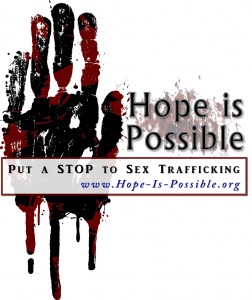
A benefit concert to raise money toward ending sex trafficking will be held at Monday at 7 p.m. in the Centrum.
The concert, organized by the campus club Hope is Possible, will feature the college’s horn choir, clarinet choir and a clarinet quartet, along with several music professors and students. Between performances, club president Bekah Marcis, a senior, and vice president Haley Haddock, a junior, will explain what sex trafficking is, its prevalence in the world and the United States, how it affects us and what people can do to help.
This year the club hopes to raise $2000 to help sex trafficked girls in Cambodia. Marcis said all of the donations from the benefit concert will go toward this cause.
Hope is Possible is an organization of about 15 people started by the women’s soccer team. Last summer the team traveled to Thailand and Cambodia to play soccer and learn about sex trafficking. Before the trip each person read the book “The Road Lost of Innocence,” which details Somaly Mam’s experiences with trafficking and how she finally got out of it and built a shelter for women like herself. The book helped the team understand the issue better.
“The situations and environment she was talking about – we were walking through those streets,” Marcis said.
In Battambang, Cambodia, the team visited the Sports and Leadership Training Academy, or SALT Academy, which works to empower girls through soccer. There they met girls as young as six who had run away from sex trafficking or were saved by government busts.
“It was shocking to me how young the girls were,” said Melissa Von Itter, a sophomore soccer team player. “My first instinct was to start crying.”
The academy was surrounded by barbed wire and had constant protection in case traffickers tried to come and take the girls back. However, Von Itter explained there is little family loyalty there, and many times parents sell their girls into sexual slavery. If they find out their girl has escaped and they want their child back, the academy is legally required to give her back to her parents.
This has led Sam Schweingruber, director of the academy, to push for the adoption of these girls. He has even adopted five girls of his own. Also at the academy, he works to empower girls through their soccer team, called the Mighty Girls.
The academy also tries to send the Mighty Girls to private schools because kids in public schools must pay the teacher extra money to take exams. If they can’t pay, their grade is affected. Private schools end up costing about the same as public schools because of this fee. If the club raises $2000, that will be enough to pay for two girls to attend private school for one year.
Von Itter compared these girls’ lives to her own.
“It’s easy to get sucked into college life,” she said, also mentioning demands and stress. Trafficked girls, however, have to worry about food, safety and where they will sleep. I realized this is the best situation I could be in. They’re in the worst possible situation.”
Throughout the trip, soccer coach Dan Weiler asked the team to journal so they could remember the things they were seeing and how they felt.
“When we were immersed, we knew we needed to do something,” Von Itter said. “We didn’t want to forget. It’s easy to come back and brush that aside.”
So when they came home they emailed each other, shared website links and ideas and decided to form a club.
Another goal of Hope is Possible is to raise awareness of the issue. They meet once a week and have recently turned their attention to trafficking in the United States. Von Itter said Portland, Oregon, has a surprisingly large amount of trafficked children.
“We’re trying to break the ignorance,” Von Itter said. “It happens here.”
Marcis said that the United States Police Force estimates 17,500 people are trafficked in the United States, including those brought in and those that are already citizens. The CIA says the number is between 45,000 and 75,000.
“No one really knows how much is happening,” Marcis said.


Most problems in Cambodia, including sex trafficking, corruption, and human rights abuses may be blamed on poverty and the destruction of social and physical infrastructure stemming from the country’s tragic past, namely, the Khmer Rouge and the use of Cambodia as turf for Cold War adversaries.